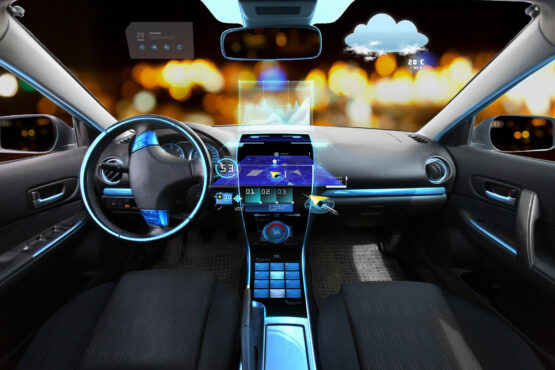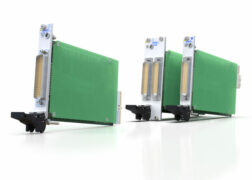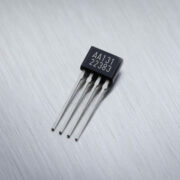Author: Ros Kruger, Director Technical Marketing, Europe & Supplier Marketing –Sensors & Power at TTI, Inc. – Europe
IT companies have been pushing the benefits of adding computing to existing processes through digitalization for years now. But the global pandemic that began in 2020 has accelerated the process, by forcing enterprises to rethink how they work, the way they add value, and the information flows they need to make these changes possible. For office-based companies, this has meant a shift to home working. For manufacturing companies, it has meant increasing automation to reduce the number of production staff at risk from infection. And for OEMs, it has meant rethinking their products so that they can provide the insights necessary to be effective in this digitalized world. In many cases, sensor technology has become the key enabler of the changes that the pandemic has demanded.
Take the key example – the early medical response to the COVID emergency. This created enormous demand for pressure, airflow and O2 sensors for use in ventilators and continuous positive air pressure (CPAP) machines. We also saw a rapid increase in demand for low-cost non-contact temperature measurement, for monitoring the temperatures of employees and schoolchildren. Building access-control companies are now incorporating temperature checking into the people-identification and people-counting systems they offer for use in public buildings and work environments. This has led to the development of more plug-and-play monitoring systems that combine multiple sensor technologies in smaller packages at lower costs than would be possible with a discrete solution.
The pandemic has also brought healthcare home, with many of us investing in technologies for monitoring our blood pressure, O2 saturation, temperature, and heart rates. This approach has been taken a step further by some patients who have taken CPAP machines home, and then relied upon onboard sensors and wireless data transmission to local doctors and hospitals for medical oversight. The pandemic has also increased public awareness of the potential for environmental issues such as air pollution to cause diseases, and so there is increasing demand for air quality-monitoring in vehicles, homes, offices and public buildings.
Our aging global population is already drawing on the early lessons of the pandemic to deploy more home healthcare, through greater use of remote patient monitoring and wearable diagnostic devices.
Beyond health, sensors have been the gatekeeper and enabler of many aspects of the global response to the pandemic. This has happened against a backdrop of existing trends to digitalization, such as increasing deployment of Internet of Things (IoT) ecosystems, greater automation in the manufacturing and process industries, and more connectivity in consumer products. The pandemic has also given us time to think again about the importance of climate change mitigation, driving interest in reducing carbon emissions, electric-vehicle traction and autonomy, and smarter cities and infrastructures. All of these will demand greater use of sensors to collect the data needed to implement management, control, and safety strategies.
Over the next five years, we expect growing demand for sensors in the factory automation and robotics sector, monitoring motor drives to improve predictive maintenance. Environmental monitoring will also be important, to check air quality and manage the performance of HVAC systems. These will interconnect with smart-home and building IoT ecosystems, which will integrate many types of sensors. And there will be many uses for sensors in the green energy sector, for example in monitoring remote wind and solar generators and managing energy-storage systems.
To consider a couple of sectors in more detail, growing use of Industry 4.0 strategies will demand more connected sensors, either through wireless protocols or low-cost Ethernet implementations. For predictive maintenance, combination sensors with pressure, temperature, and force/vibration measurement will be popular. There will be increased demand for machine-vision cameras and photoelectric sensors, and better position and inertial sensing through accelerometers, speed sensors and gyros. As already discussed, there will be growing demand for many forms of gas sensing.
In the automotive sector, the trend to electrification is driving demand for temperature and gas sensors for battery management systems, inertial and position sensors to enable greater contextual awareness, and advanced radar and lidar sensors to enable autonomous driving.
The sensor industry is responding to these opportunities with broad innovations, such as greater integration, more use of MEMS manufacturing techniques, and the development of plug-and-play sensor modules, with integrated signal-conditioning circuitry, that make it easier for designers to meet market needs. It is also responding to narrower technical challenges, such as demands for higher data rates, faster processing, and greater susceptibility to EMI. Other challenges include reducing power consumption, developing energy-harvesting technology to capture power in the field, and biocompatibility issues for wearables, such as the SpO2 monitor in the Apple Watch.
Connector makers will have to respond to rapid changes in the field of sensing. For example, increasing sensing rates to improve control will lead to greater data rates. The cable carrying this data will be more susceptible to EMI/ RFI, and therefore will need shielding.
Similarly, the spread of sensors into harsher environments will demand the use of outdoor connectors with ratings of IP67 or higher, while in medical environments connectors may need IP68 watertight sealing, easy cleaning, as well as easy and safe mating and locking systems.
Sensors are also taking connectors and cables deeper into the physical environment, for example in speed sensing on motor shafts. This will mean the connector will have to endure high temperatures, lots of vibration, and a harsh environment. This is especially true in electrical vehicles, in which sensors are being integrated into battery systems to measure the temperature and sense any outgassing from the cells, in a high-voltage and high-current environment that demands the use of special plastics for the connector housings.
Connector makers will have to respond to sensor users’ desire for simpler deployment. There are about eight different interface protocols for connectors at the moment, and so an effort to standardize a quick-lock push/pull system is underway among the leading connector manufacturers. Connector makers are also implementing support for the two-wire Ethernet protocol that is becoming popular among sensor makers, which provides full-duplex 10/100BaseT connectivity over up to 1,000 feet (305m), at low cost and weight.
The pandemic has caused unprecedented global change, bringing forward the implementation of trends such as digitalization by years if not decades. Sensor technology has been a key enabler of direct medical responses to the health challenge of COVID, as well as indirect responses such as increased automation. Connector makers, in turn, have stepped up to enable greater use of sensors in the pandemic response, and in the increasingly digital lives we will all be living once the pandemic is over.
ABOUT TTI, Inc.
TTI, Inc., a Berkshire Hathaway company, is an authorized, specialty distributor of electronic components. Founded in 1971, the emphasis on a broad and deep product portfolio, available-to-sell inventory and sophisticated supply chain programs have established TTI as a distributor of choice to manufacturers in the industrial, defense, aerospace, transportation, medical, and communications sectors worldwide. TTI and its wholly owned subsidiaries, the TTI Family of Companies, Mouser Electronics, Sager Electronics and Exponential Technology Group employ over 7,000 people in more than 133 locations throughout North America, South America, Europe, Asia and Africa. Globally, the company maintains about 288,000 square meters of dedicated warehouse space housing over 850,000 component part numbers.
For more information about TTI, visit www.ttiieurope.com.










